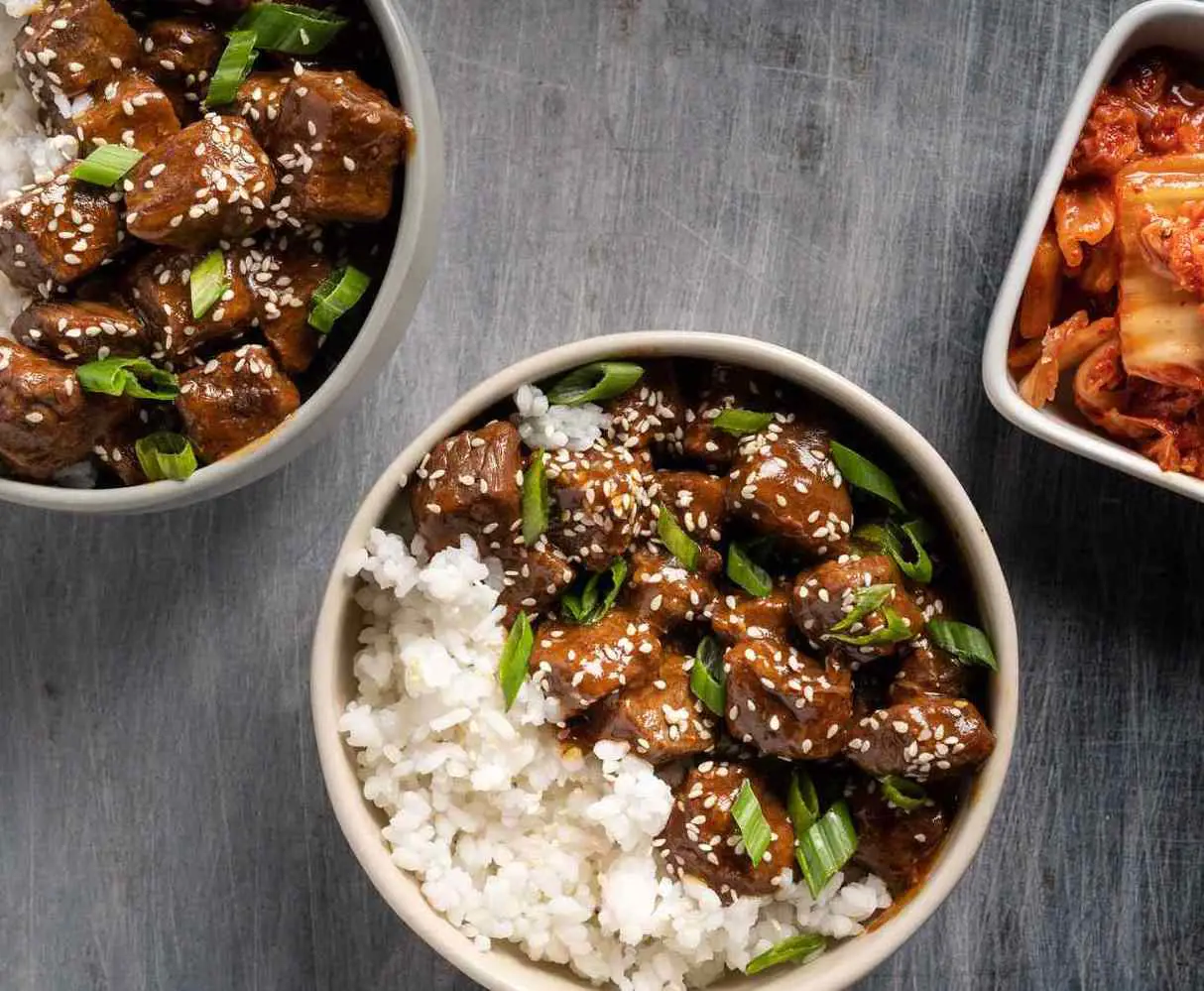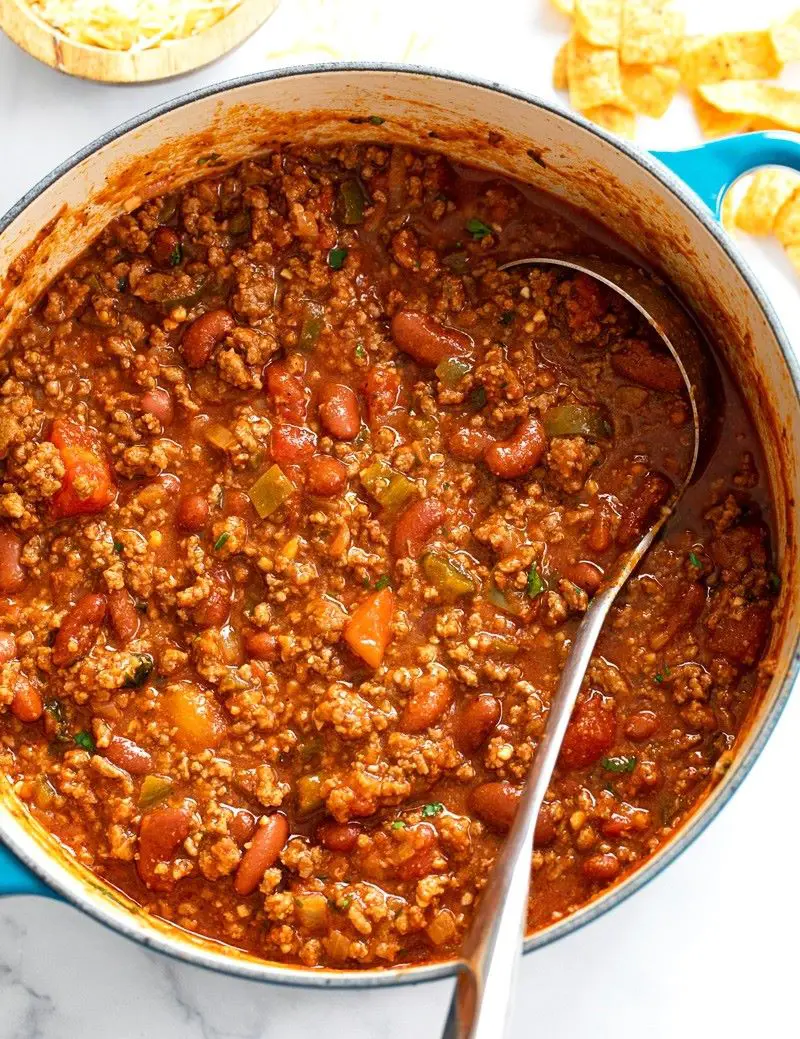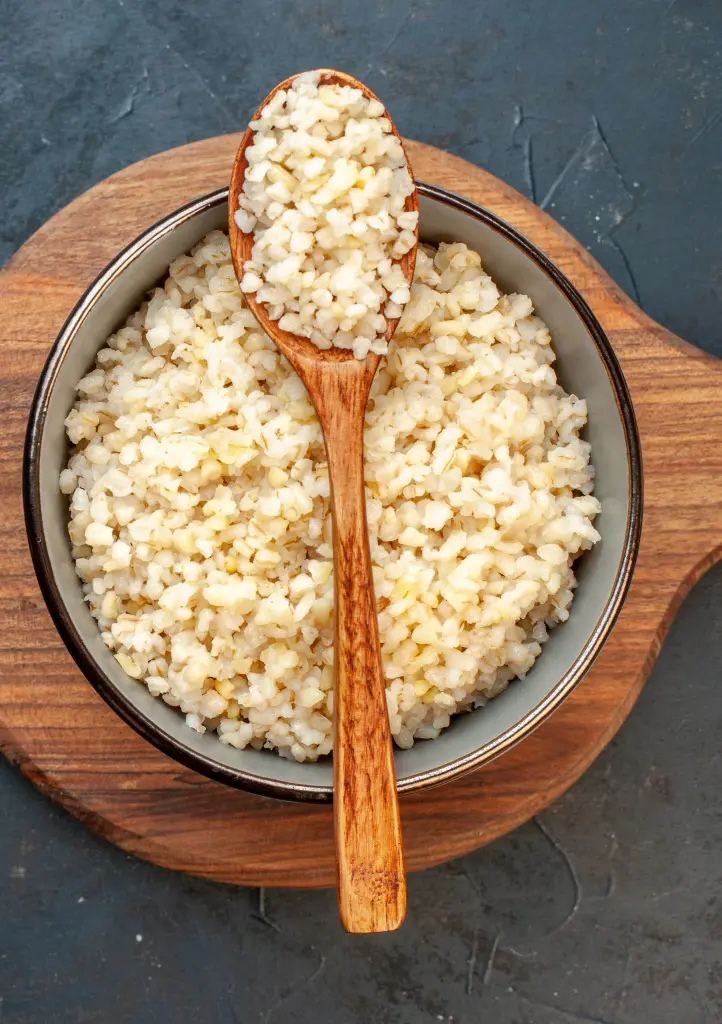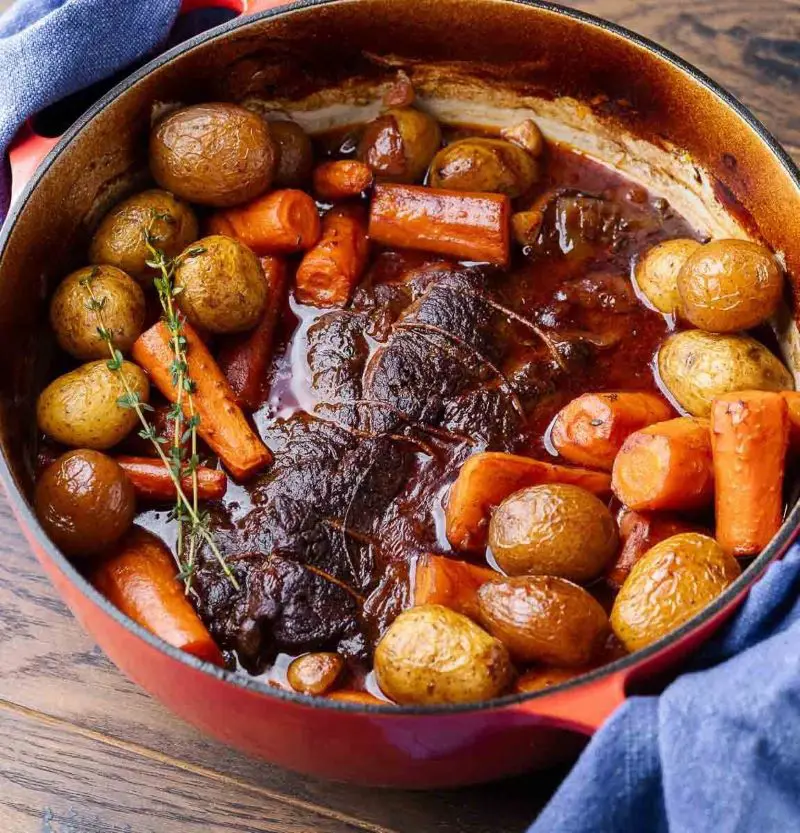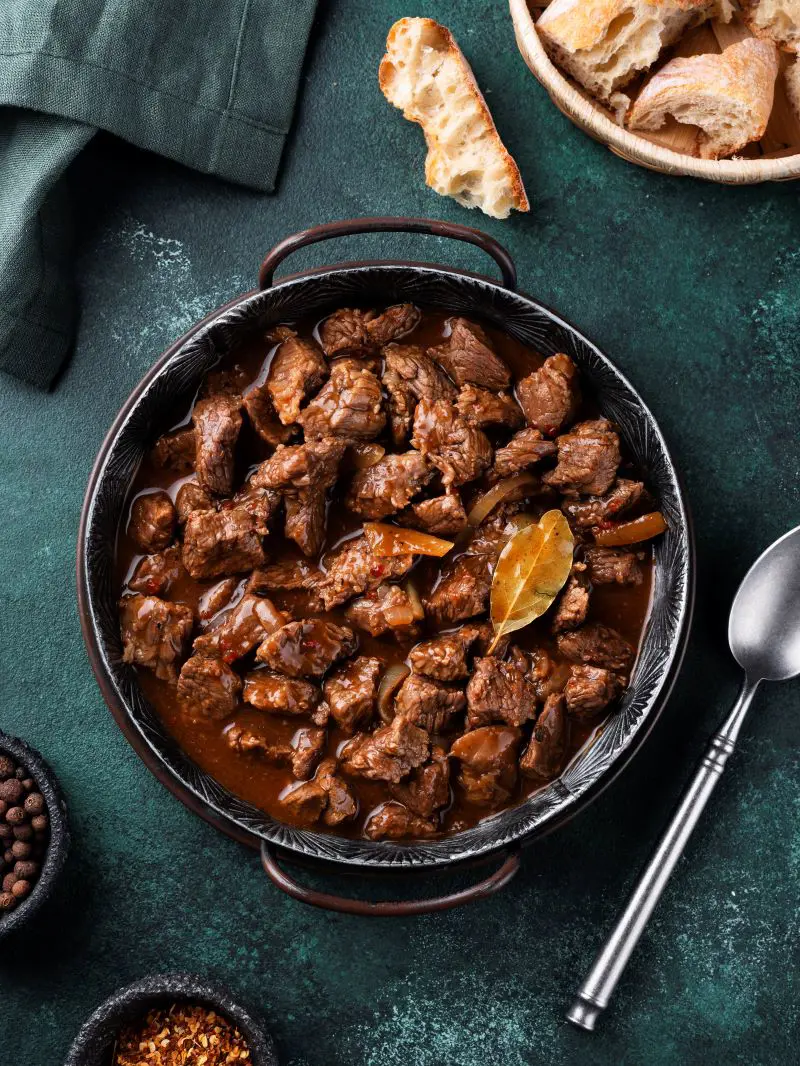Korean cuisine is known for its bold flavors and unique combinations, and Korean beef recipes are no exception. From traditional classics to modern twists, there is a wide range of delicious dishes to explore. Various dishes are often prepared with a similar set of ingredients, which makes the recipes easy to make.
Even though beef is a prevalent ingredient in Korean cuisine, there are modern takes and fusion foods that make this niche even more diverse. Here are 20 such mouthwatering Korean beef recipes to introduce to your family:
1. Bulgogi (Grilled Beef)
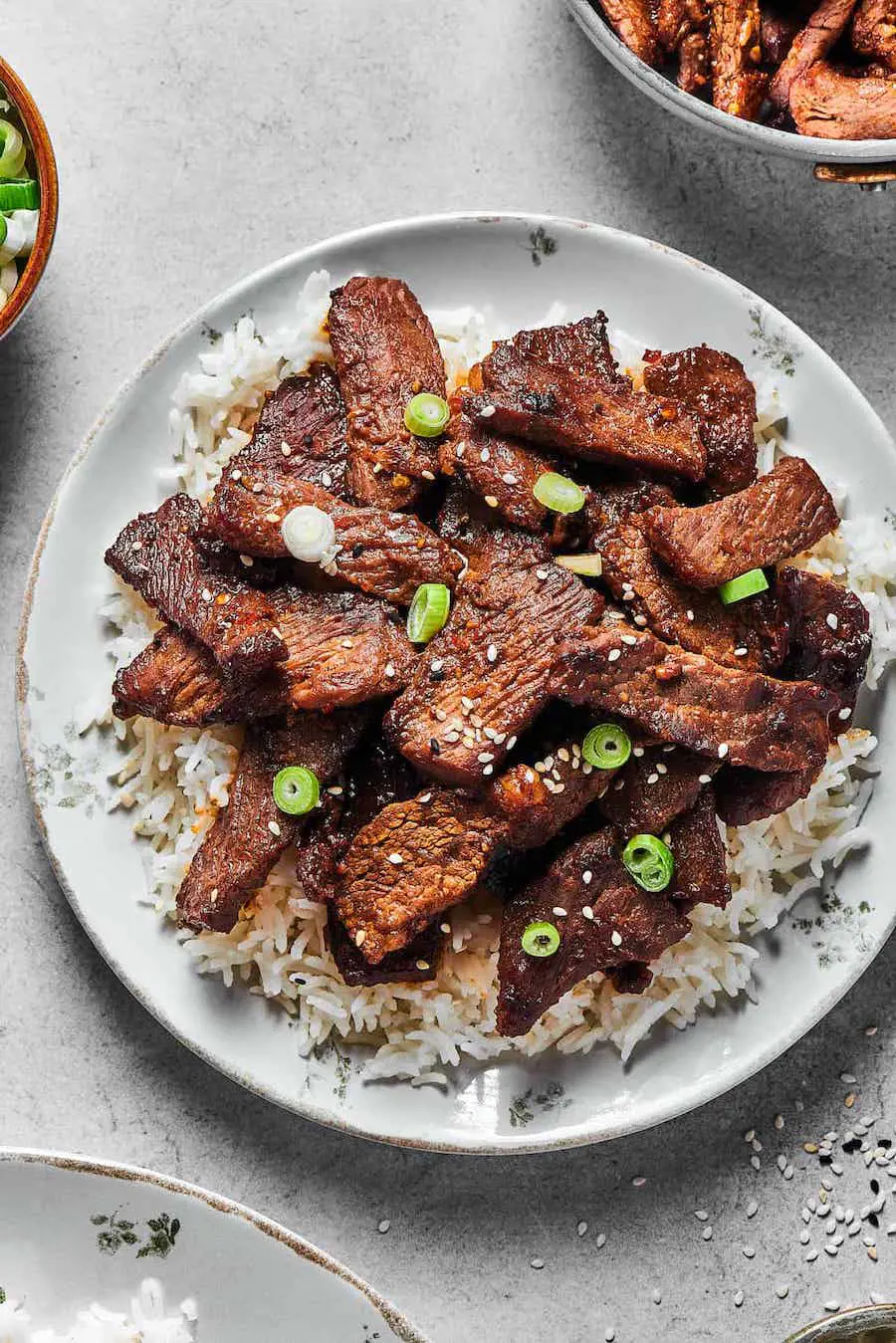
The word "bulgogi" translates to "fire meat" in English, reflecting the traditional method of grilling the thinly sliced marinated beef over an open flame. The key to a mouthwatering bulgogi lies in the marinade. It typically consists of soy sauce, sugar, sesame oil, garlic, and other seasonings. The beef is marinated for several hours to allow the flavors to penetrate the meat.
The marinated beef is then grilled to create a caramelized exterior while retaining its juiciness. Bulgogi is often served with a variety of accompaniments, including lettuce leaves for wrapping the beef, rice, and an assortment of side dishes such as kimchi and pickled vegetables.
2. Galbi-jjim (Braised Beef Short Ribs)
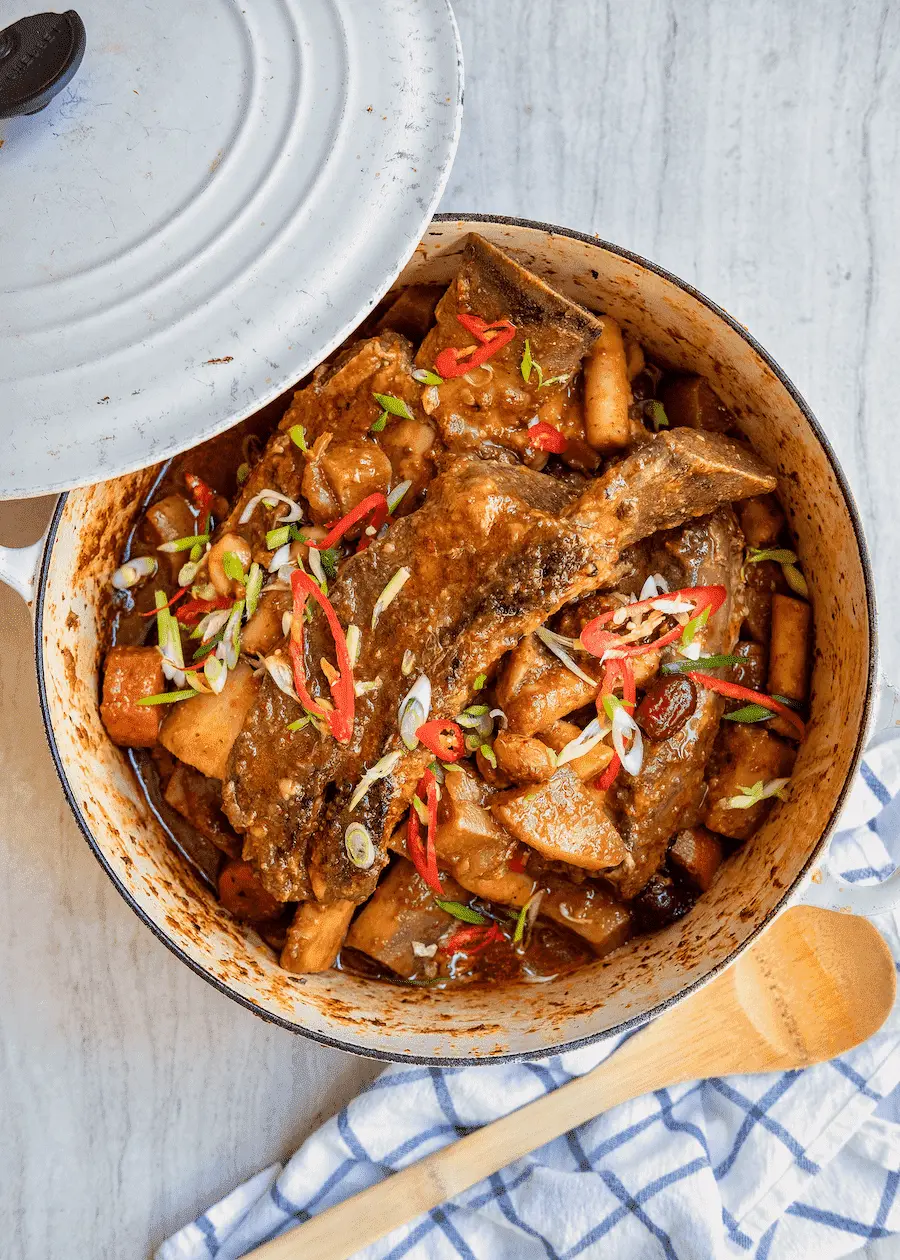
Galbi-jjim is a traditional Korean dish prepared with marinated beef short ribs, vegetables, and a variety of seasonings. The name "galbi-jjim" translates to "braised short ribs" in English. It is served as a main course during special occasions or family gatherings.
The ribs are first marinated in a mixture of traditional Korean spices. After marinating for a few hours or overnight, the ribs are braised in a pot with additional vegetables. The slow cooking process allows the meat to become tender and juicy while absorbing the flavors of the marinade.
3. Yukhoe (Korean Beef Tartare)
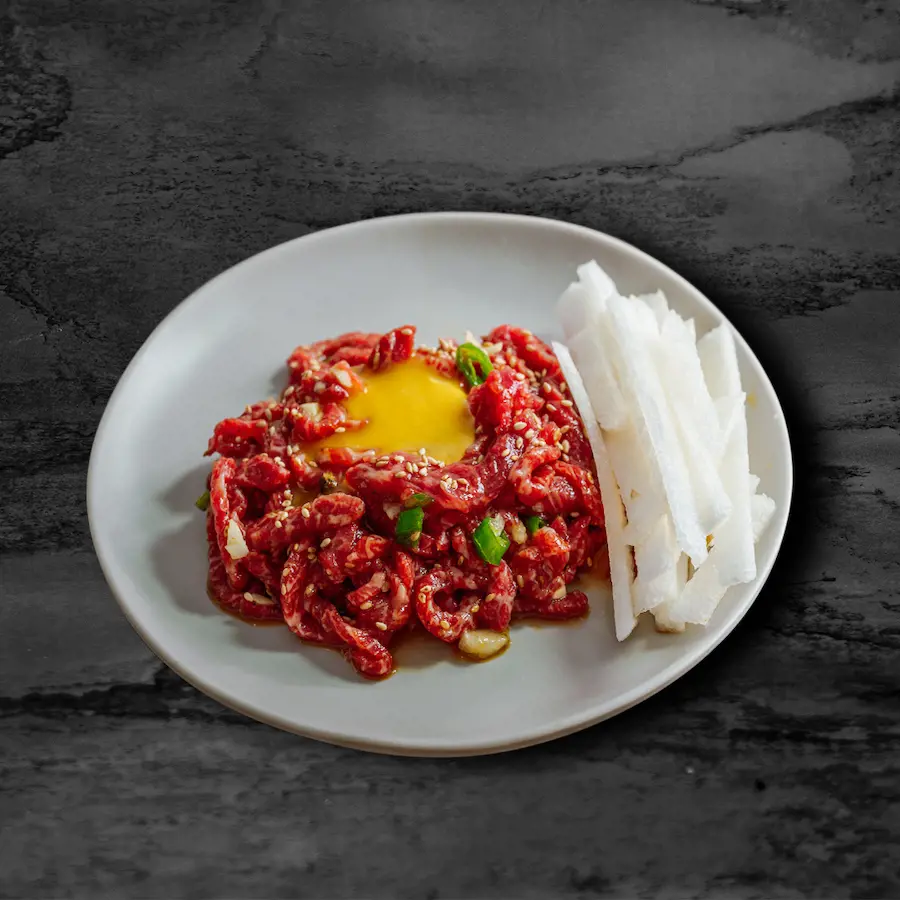
Yukhoe, also known as Korean beef tartare, is a raw beef dish. It is made from raw beef that is finely minced or thinly sliced and seasoned with various ingredients. Yukhoe is often compared to dishes like steak tartare or carpaccio, but it has its own unique flavors and characteristics.
The main ingredient in yukhoe is high-quality beef, typically sirloin or tenderloin. The beef is then thinly sliced or minced, creating a delicate and tender texture. The dish is typically served with a raw egg yolk on top for creaminess. It is important to select fresh beef to ensure the flavors in the dish.
4. Jang Sanjeok (Beef Patties)
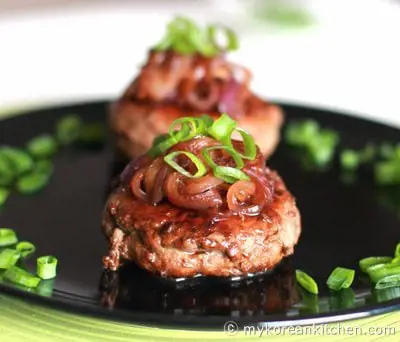
Jang Sanjeok is a Korean beef patty prepared with traditional Korean seasoning. If you are a fan of burgers and are always looking for new ways to jazz up your burger, try this Korean beef patty recipe for yourself.
The meat patties are broiled in sweet and savory teriyaki sauce to make sure that they remain juicy and flavorful throughout. You can have these on your burger or as a side dish with rice. This also pairs well in Korean barbecues.
5. Japchae (Stir-Fried Glass Noodles)
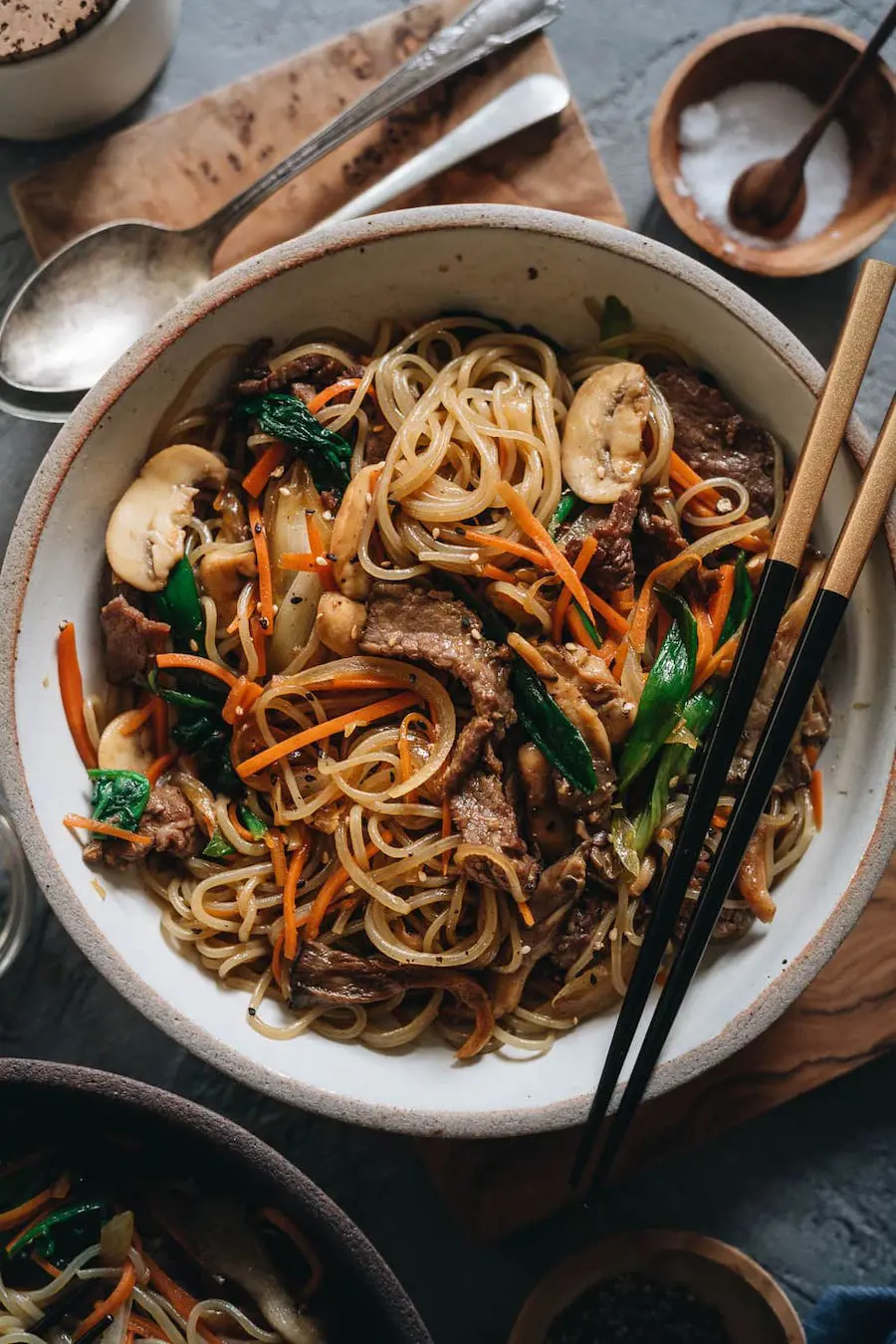
Noodles are one of the most popular dishes in Korea. It is loved by people of all ages due to its versatility and flavor options. So it is not shocking that Japchae is a popular beef recipe. It is a stir-fried noodle dish made with sweet potato glass noodles, mixed vegetables, and thinly sliced beef or tofu.
The popularity of Japchae extends beyond Korea and is recognized worldwide. The flavors, nutritional profile, and customization are what make this dish one of the best beef recipes.
6. Gogigui (Korean Barbecue)
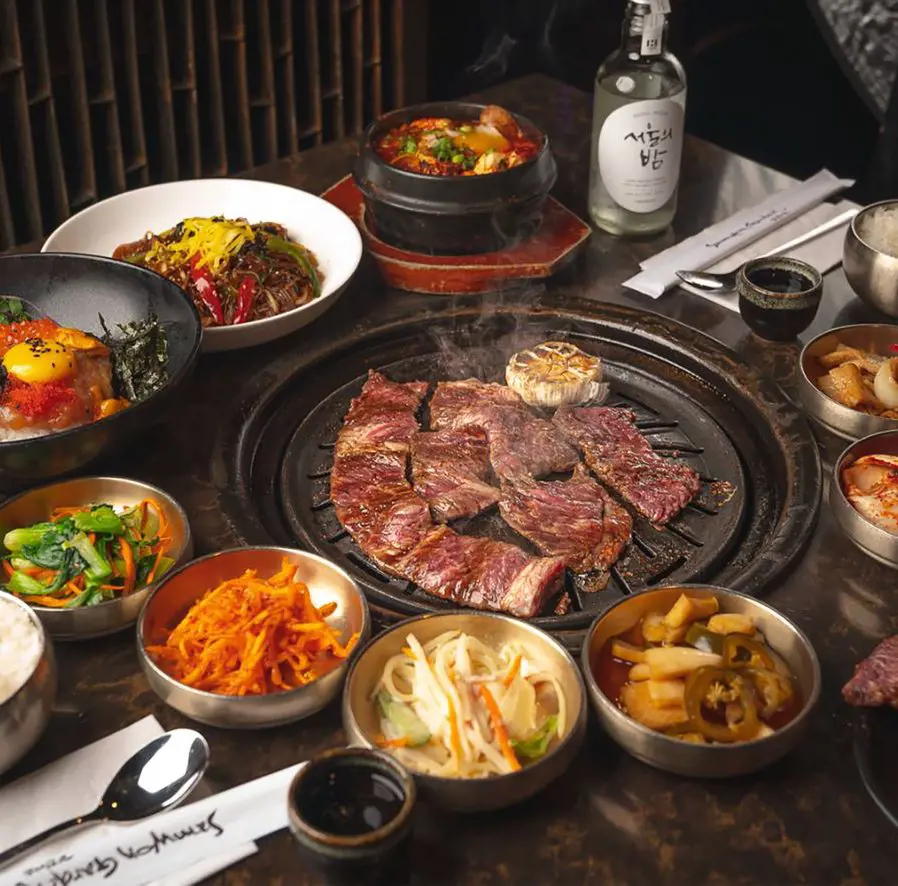
Gogigui is a traditional Korean method of grilling meat. It is a popular dining experience that brings people together to enjoy the delicious flavors of grilled meat and the interactive cooking process.
In Gogigui, thin slices of meat, such as beef, pork, or chicken, are grilled on a tabletop grill. The meat is often seasoned with soy sauce, sesame oil, garlic, and ginger. The grilling is typically done by the diners themselves, creating a fun and social atmosphere.
7. Kimchi Jjigae (Kimchi Stew with Beef)
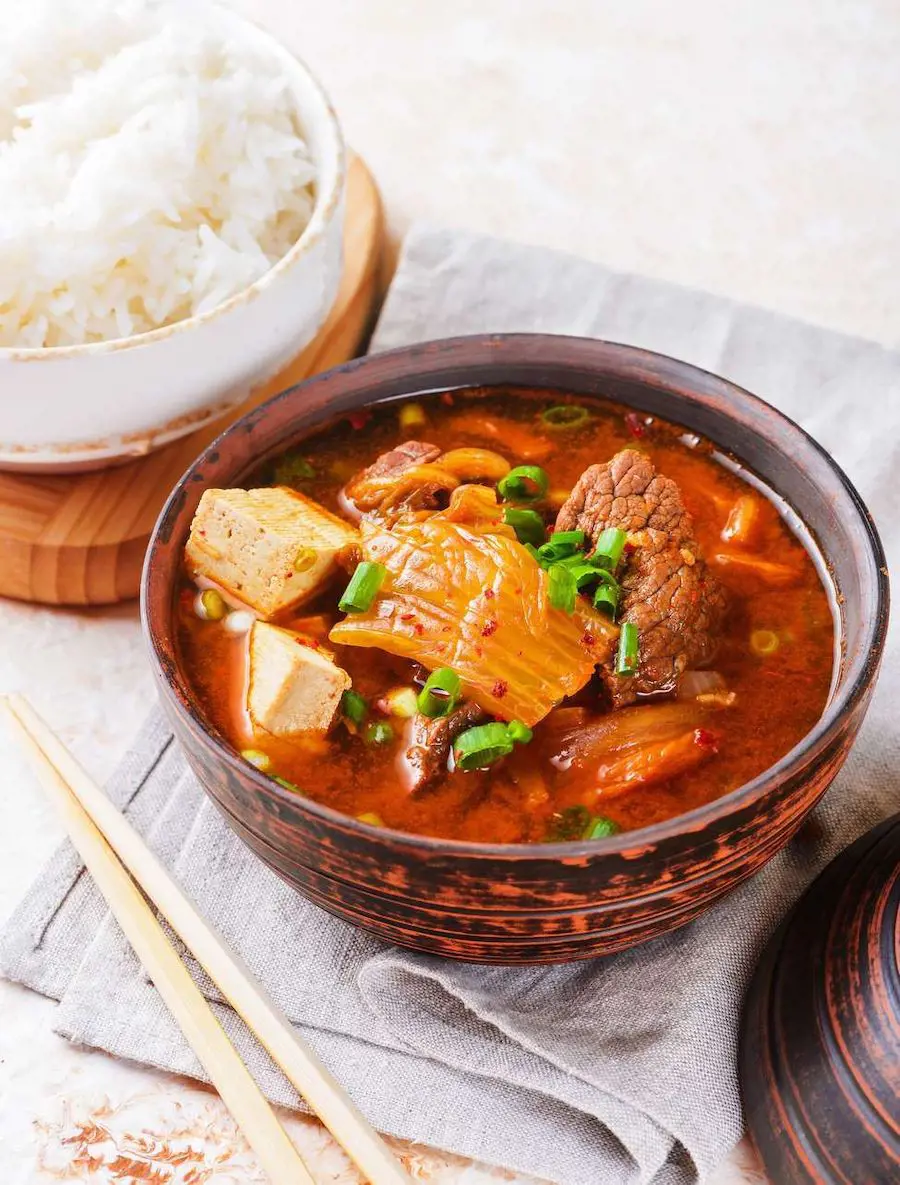
Kimchi Jjigae is a hot and comforting soup made with fermented cabbage, known as kimchi, and various other ingredients. Kimchi is a staple in Korean cuisine and is identified by its distinct tangy and slightly sour taste. When combined with other ingredients in a stew, it creates a rich and flavorful broth.
The dish is typically made with beef, tofu, onions, and mushrooms. The beef adds a savory taste and richness to the stew, while the tofu provides a soft and silky texture. Additional ingredients like green onions and chili peppers can be added for extra heat and freshness.
8. Bibimbap (Beef Rice Bowl)
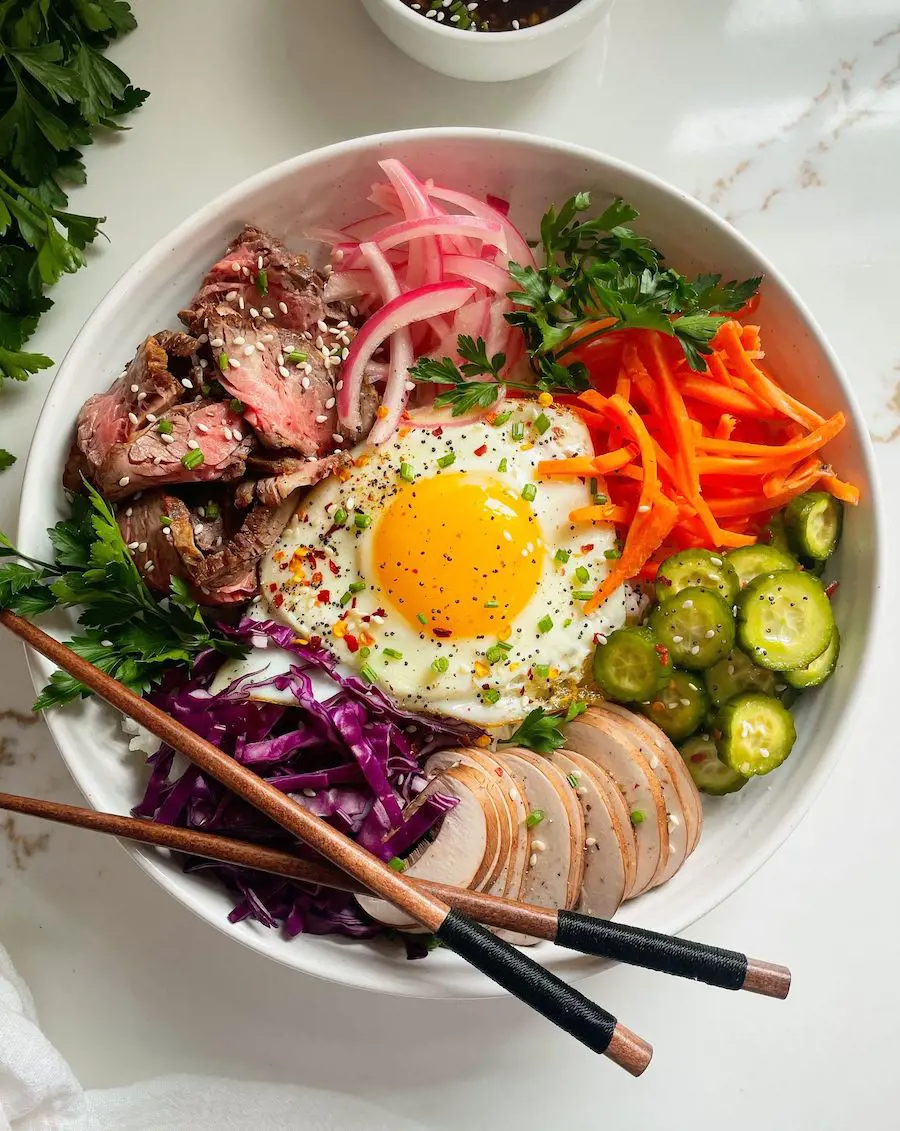
Bibimbap is a Korean rice dish. It has vibrant colors, diverse flavors, and nutritional value. Even though it can be prepared with vegetables, the most common variation of this dish is made with protein sources like marinated beef, chicken, or tofu. The dish is then garnished with a fried egg and served with a spicy chili pepper paste called gochujang.
What sets bibimbap apart from other rice dishes is the way it is presented. The ingredients are meticulously arranged on top of the rice, creating a visually appealing dish that is almost too beautiful to eat.
9. Soondubu Jjigae (Tofu Stew with Beef)
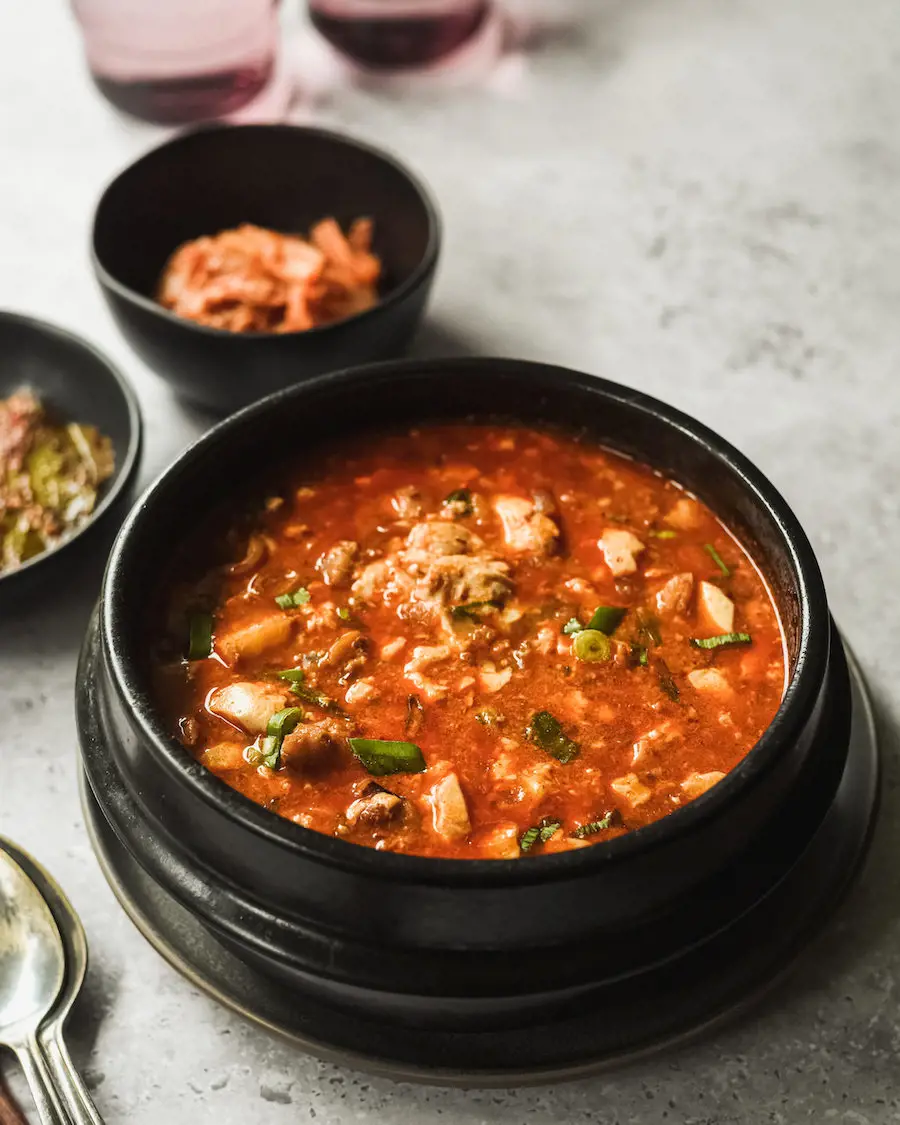
Soondubu Jjigae is similar to Kimchi Jjigae, except that the base of the stew, in this case, is beef stock. It is a hot and hearty stew made with soft tofu, various vegetables, with a flavorful broth. The dish is traditionally served boiling hot in a stone pot.
The broth is seasoned with Korean chili paste, gochujang, and chili flakes. You can also add a few pieces of beef to add more chewiness to the dish. The soft tofu used in this dish is incredibly silky and delicate, adding a creamy texture to the stew.
10. Tteokbokki (Spicy Rice Cakes)
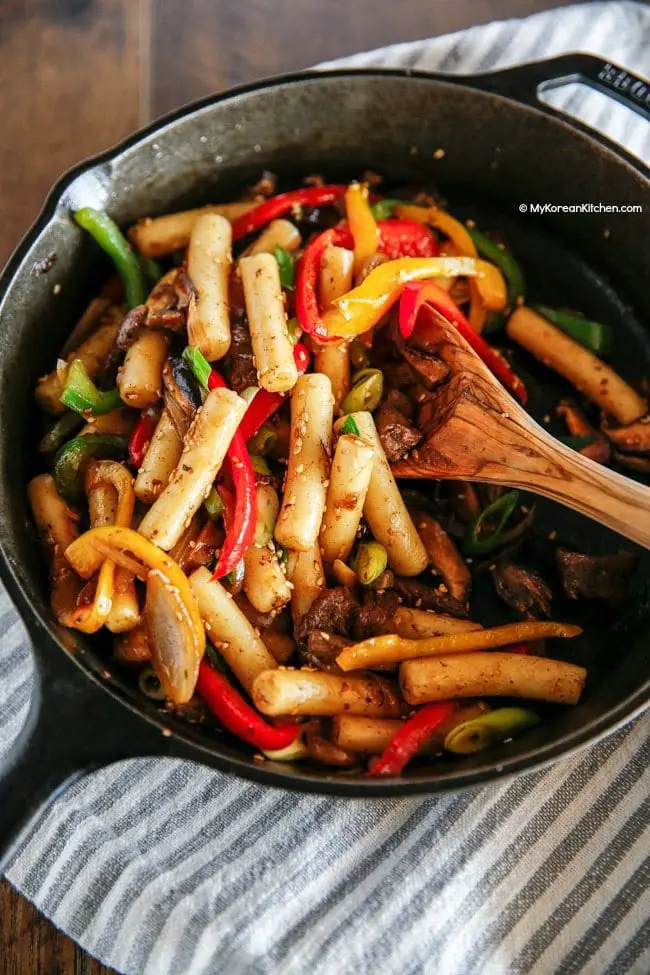
Tteokbokki is a popular Korean street food dish that is garlicky, spicy, and flavorful with pieces of beef meat. It is made with garaetteok, a type of rice cake, which is the main ingredient of this dish. The rice cakes are cooked in a spicy and flavorful sauce, creating a dish that is both spicy and savory.
While preparing the sauce, add pieces of beef meat to create a rich paste with Asian spices like soy, sesame and ginger. The sauce also contains gochujang, a fermented red chili paste, which gives the dish its signature heat and rich flavor.
11. Korean Beef Tacos

The first fusion Korean food on our list is Korean Beef Tacos. The combination of the bold flavors of Korean cuisine with the popular Mexican street food has gained immense popularity in recent years. In addition to the flavorful meat, there are plenty of toppings to choose from.
The star of these tacos is the marinated beef, typically made with thinly sliced ribeye or flank steak. The beef is prepared with popular Korean spices and pan-fried. This ensures that the meat remains tender and juicy with a caramelized outer layer.
12. Wanja Jeon (Pan-fried Meatballs)

Wanja Jeon is a holiday-favorite beef dish where beef meat patties are pan-fried with an egg batter to create a crispy outer layer. The meatballs are prepared with pork and beef ground meat dipped in egg batter. These are a popular dish during the holiday season in the country.
This dish holds a cultural and nostalgic value for most Koreans. You can either serve them for lunch or as an appetizer during a family gathering.
13. Beef Doenjang Jjigae (Soybean Paste Stew)
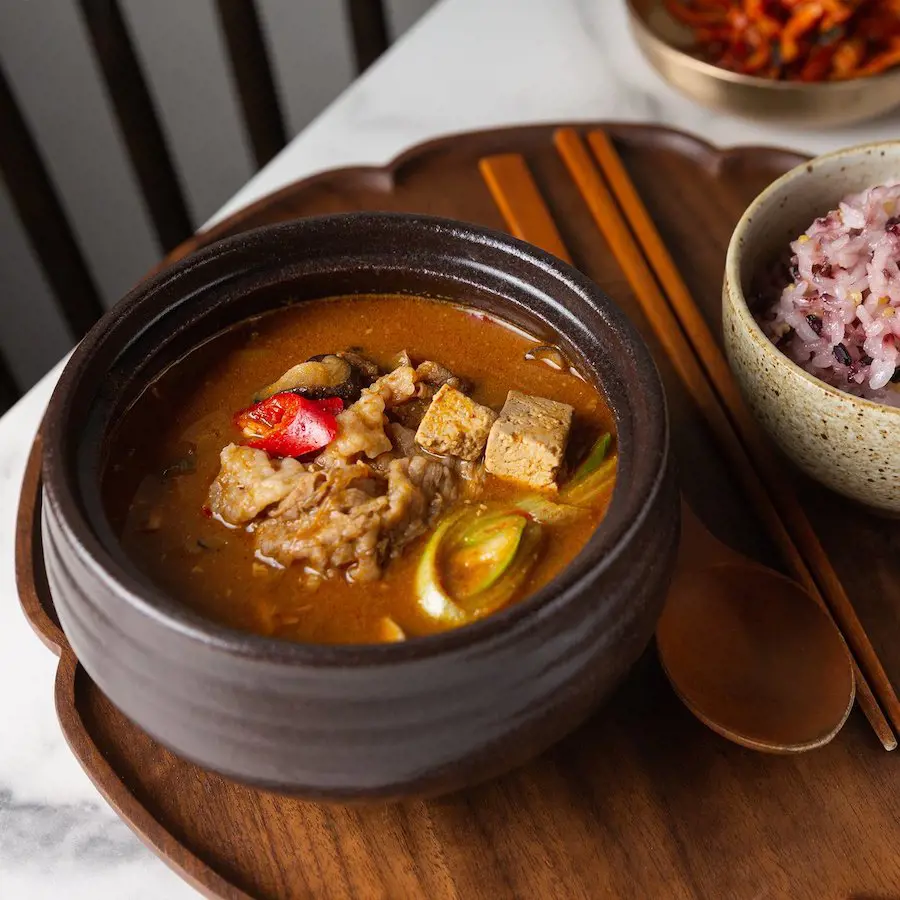
Doenjang Jjigae is similar to two other stew recipes on this list. This, however, stands apart due to the creamy soybean paste. It is prepared with fermented soybean paste, known as doenjang, commonly used in Korean cuisine. It is mixed with water to create a savory broth.
It is then filled with beef slices that are lightly sauteed with a few spices. The stew is typically simmered on low heat, allowing all the flavors to meld together and develop a deep, complex taste.
14. Galbitang (Beef Short Rib Soup)
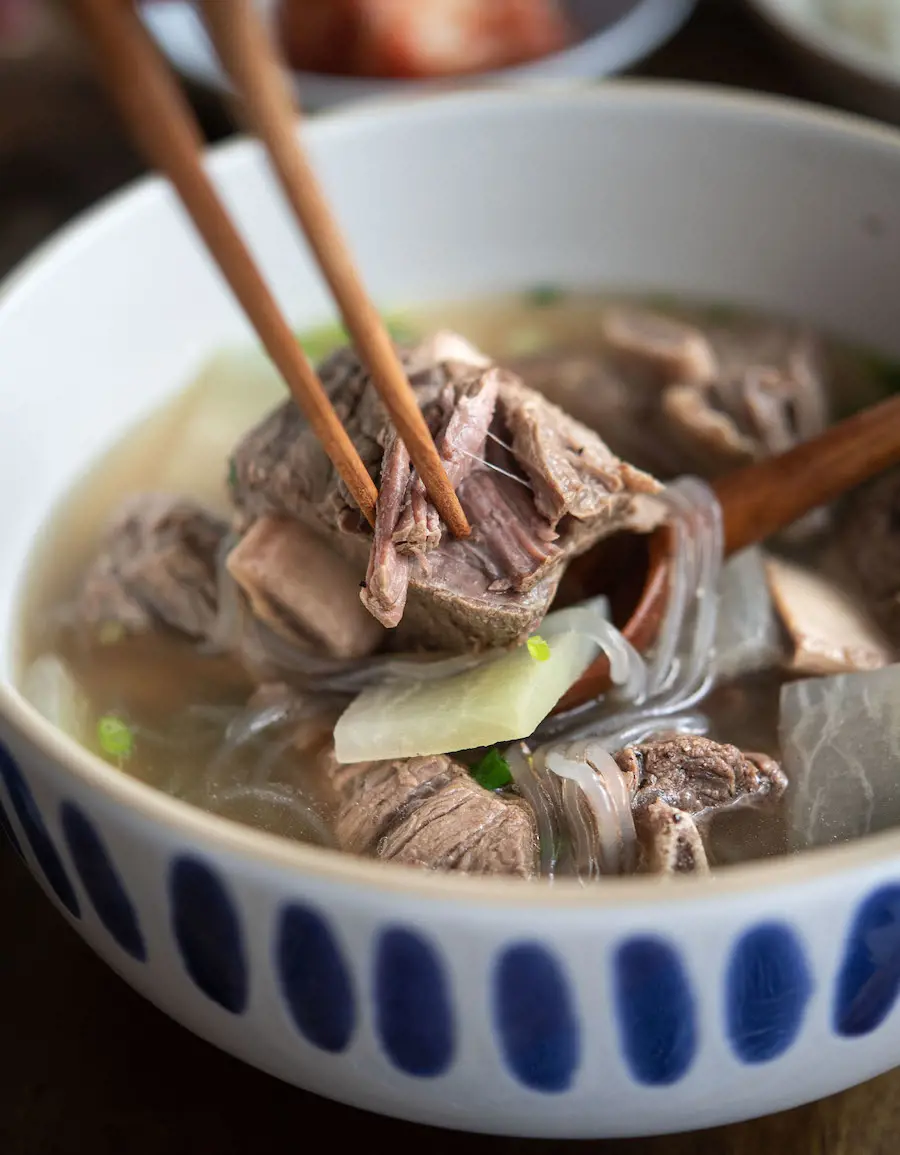
Galbitang is a clear soup made with a fairly expensive cut of meat. Thus, it is often considered a sign of luxury. The dish is hearty, nourishing, and delicate so that you can devour every spoonful filled with flavor. To prepare galbitang, beef short ribs are first boiled to remove any excess fat and impurities.
Then, they are simmered with various ingredients such as garlic, ginger, onions, and soy sauce, which infuse the broth with a delightful aroma and taste. It is a comparatively longer cooking process, but it ensures that each spoonful of this dish is filled with flavor.
15. Yukgaejang (Spicy Beef Soup)
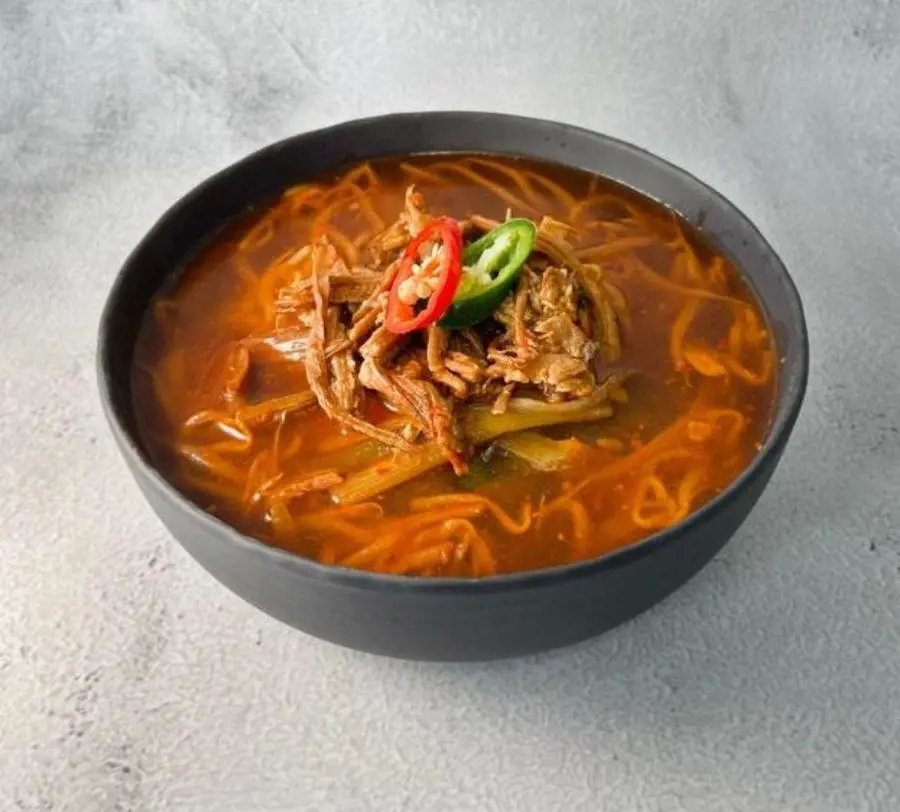
If you like a little spice to your soup, we have just the dish for you. Yukgaejang is a savory and spicy beef soup made with thinly sliced beef. The meat, along with veggies like mushrooms, bean sprouts, and green onions, are simmered together in a rich and spicy broth made with gochujang.
This is considered one of the best shredded beef recipes as the slow cooking process makes sure to cook the tough brisket meat while also infusing it with flavor. Often consumed during cold winter months or after a long day, it is paired with a side or rice or noodles.
16. Bulgogi Jeongol (Korean Hot Pot)

Korean Hot Pot recipes combine the classic Bulgogi with veggies and seasonings that are known to result in an umami flavor. Jeongol refers to a type of Korean hot pot where the ingredients are cooked together in a savory broth at the table.
The cooking process of Bulgogi Jeongol is interactive and communal, as diners can add their desired ingredients to the hot pot and cook them to their preferred level of doneness. You can have this with an array of side dishes so you can customize the meal to your liking.
17. Jangjorim (Soy-braised Beef)

This dish is for days when you want a meaty dish but without the hassle of preparing an entire meal. It goes well with plenty of other dishes which makes it a popular choice during festivals. Another thing that is great about this dish is that it can be preserved in the fridge for up to 7 days. So, this is a great option for meal prep.
The soy adds sweetness to the otherwise savory beef pieces. Some variations of Jangjorim may also include hard-boiled eggs or radish slices cooked alongside the beef.
18. Sogogi-myeon (Beef Noodle Soup)
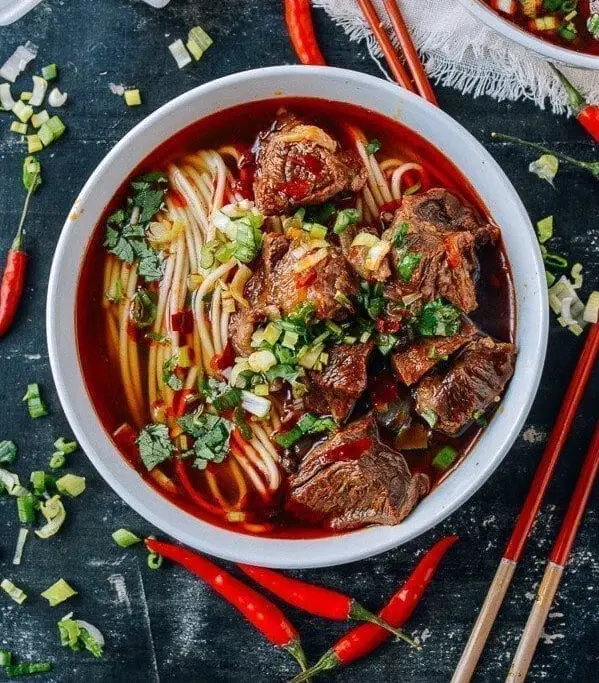
Sogogi-myeon, also known as beef noodle soup, is a popular Korean dish with rich flavors of beef and noodles in a comforting and satisfying bowl of soup. The noodles used in Sogogi-myeon are usually made from wheat flour, giving them a chewy texture that complements the tender beef. The noodles absorb the flavors of the soup so that each bite is filled with savory goodness.
You can jazz up your soup with your vegetables of choice and favorite seasonings.
19. Korean Rib Eye Steak Salad

Korean Rib Eye Steak Salad is a perfect blend of textures, colors, and flavors, making it a feast for both the eyes and the taste buds. At first, the rib eye steak is grilled to perfection before cutting it into thin slices. The Korean spices used in the marination result in a deep umami flavor and a hint of heat.
The meat is then combined with a medley of fresh and crisp vegetables, such as lettuce, cucumber, carrot, and radish, for a refreshing crunch. The dressing consists of sesame oil, rice vinegar, soy sauce, honey, and a touch of chili paste.
20. Suyuk (Boiled Beef Belly)
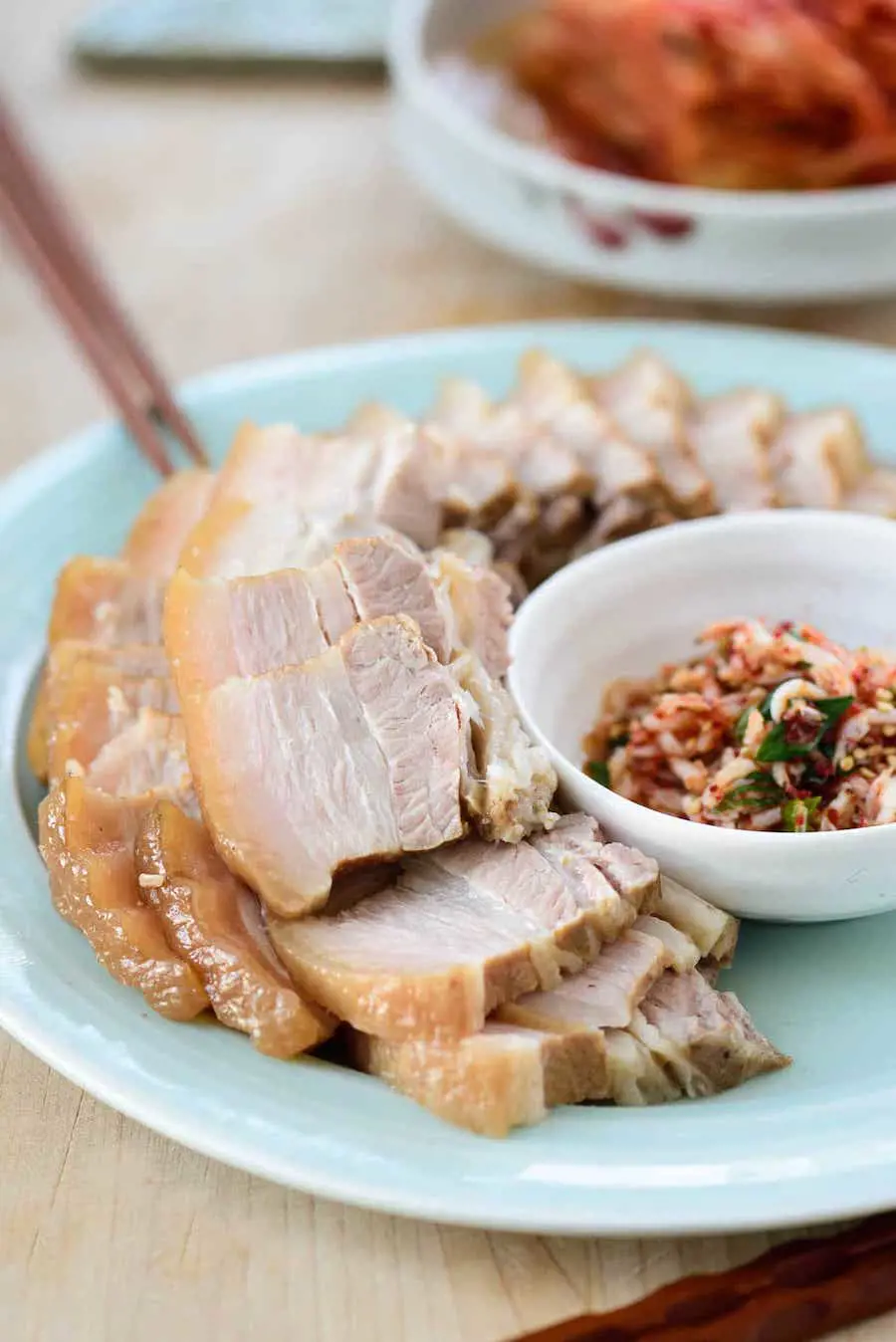
Suyuk is a versatile Korean dish that can be enjoyed in various ways. However, the most popular way to enjoy Suyuk is by wrapping the tender pork belly slices in lettuce or perilla leaves. These wraps are then dipped into a savory soy-based sauce called Ssamjang for a kick of flavor.
You can also enjoy the dish cold. The boiled pork belly is chilled and thinly sliced, then served with a dipping sauce made of soy sauce, vinegar, sesame oil, and other seasonings. This form of Suyuk is perfect for hot summer days.

